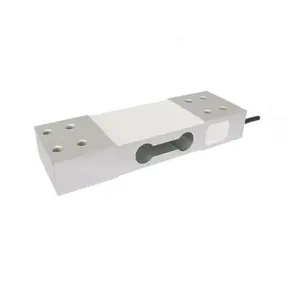Introduction to Mining Weighbridges
Mining weighbridges play a vital role in the mining industry, serving as critical equipment for measuring the weight of various vehicles transporting materials from extraction sites. These robust platforms ensure accuracy in monitoring payloads, enabling businesses to optimize operations, comply with legal requirements, and improve overall efficiency. Understanding the core features and functionalities of mining weighbridges can significantly enhance operational productivity and maintain safety standards.
Types of Mining Weighbridges
Mining weighbridges come in several configurations and styles to suit diverse operational needs.
- Portable Weighbridges: Ideal for temporary setups, portable weighbridges can be relocated as required, making them perfect for mines in different exploration stages.
- Permanent Weighbridges: Fixed installations that offer high durability and precision over extended periods. These are typically utilized in larger mining operations.
- Above-Ground Weighbridges: Commonly seen in mining operations, these weighbridges are elevated above ground, allowing easy access for vehicles.
- In-Ground Weighbridges: Integrated into the ground, these weighbridges provide a streamlined loading process while minimizing wear on heavy equipment.
Function and Feature of Mining Weighbridges
Understanding the specifications and features of mining weighbridges is essential for selecting the right equipment. They offer several functionalities that significantly enhance operations:
- Accurate Weight Measurement: Equipped with advanced load cells, mining weighbridges provide precise weight readings, ensuring compliance with legal regulations and reducing operational discrepancies.
- Durability: Constructed from high-strength materials to withstand harsh mining environments, these weighbridges resist corrosion and mechanical wear for extended use.
- User-Friendly Software Integration: Many modern weighbridges feature software that integrates with existing management systems, enabling automatic data logging and reporting.
- Remote Monitoring: Some weighbridges offer real-time data monitoring, allowing operators to access weight information remotely, thus streamlining operational efficiency.
Applications of Mining Weighbridges
Mining weighbridges find applications across various facets of the mining industry. Their versatility contributes to improved processes and streamlined operations:
- Material Transport Regulation: Weighbridges ensure that vehicles do not exceed weight limits, preventing damage to roads and ensuring compliance with transport regulations.
- Inventory Management: Accurate weight measurements help in tracking the amount of material extracted and transported, aiding in inventory control and future planning.
- Cost Management: By ensuring accurate payload calculations, mining weighbridges assist businesses in optimizing logistics costs and reducing wastage.
- Sustainability Efforts: With precise measurement tools, mining operations can track material use more effectively, leading to a more sustainable approach in resource management.
Advantages of Using Mining Weighbridges
Implementing mining weighbridges offers numerous advantages to operations, including:
- Enhanced Productivity: With quick and accurate weight measurements, operations can minimize waiting times and optimize loading processes.
- Regulatory Compliance: Properly calibrated weighbridges assist companies in adhering to industry regulations regarding vehicle weights and safety standards.
- Improved Safety: By preventing overloaded vehicles, mining weighbridges contribute to safer transport within mining sites, reducing accident risks.
- Real-time Data: Access to immediate weight data helps in making informed decisions based on current operational scenarios, which can be vital for dynamic mining environments.





























